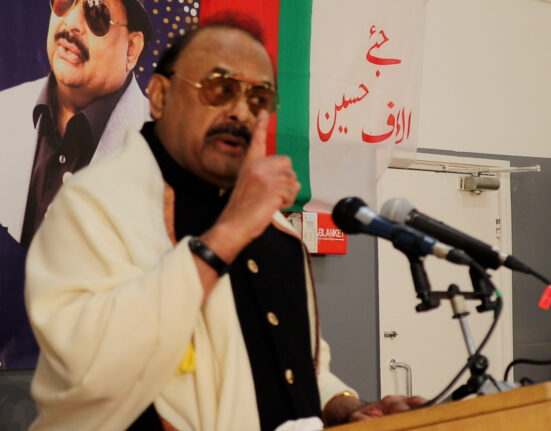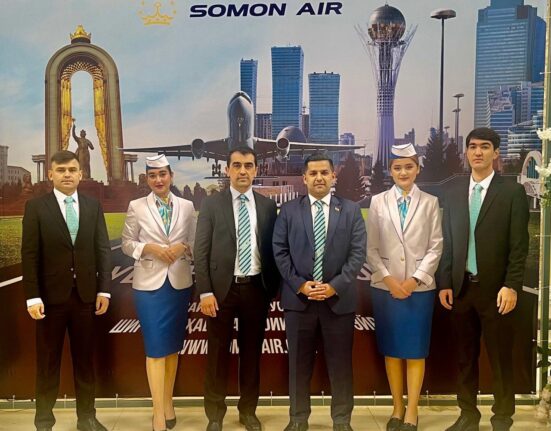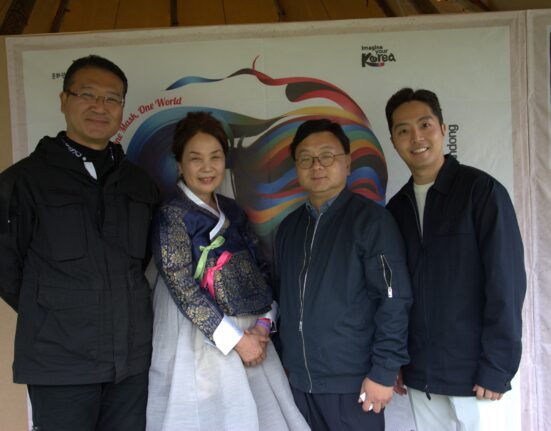Kyrgyzstan’s indigenous horses adapted to the country’s high-mountain terrain, are at risk of extinction.
For the herd of horses owned by Kyrgyz farmer Talgarbek, the chilly, 2,700-meter-high Bolgart Valley is a familiar and comfortable home.
These indigenous horses, sometimes referred to simply as the Kyrgyz horse, are renowned for hardiness and steadiness on their feet, despite their slight stature.
Yet their biggest advocates are convinced that they now face an extinction threat.
“According to confirmed archaeological data, they are at least 4,000 years old,” claimed Bolotbek Toktosunov of Kyrgyzstan’s Academy of Sciences, who has dedicated the last decade to researching indigenous horses and was greeted warmly by Talgarbek as he arrived at the spartan, sunlit farmstead.
“Compared to the Kyrgyz horse, many Eurasian horses are just babies!”

The main threat to Kyrgyzstan’s horses has not changed since they were crossbred in their thousands in the mid-20th century to create a larger breed called the Novokyrgyz.
The Novokyrgyz, which became dominant across Kyrgyzstan in the second half of the last century, is faster over short distances and more useful in agricultural settings. But it is also more expensive to feed, slightly less adept at mountainous terrain, and more prone to disease, according to experts like Toktosunov.
“There is total hybridization going on,” complained Toktosunov, who also claims that indigenous Kyrgyz horses yield better meat than the Novokyrgyz. “There is no breeding plan to save any breed. This is something the agriculture ministry should be busy with, but they don’t have any time for it,” Toktosunov told Eurasianet.
Toktosunov estimates that there are only 3,000 animals alive that qualify as indigenous Kyrgyz horses.

For the most part they have a dark coat, although Toktosunov also counts rarer spotted horses as a part of the breed.
For other Kyrgyz and foreign researchers, the spotted horses are part of a separate breed called the Chaar.
Both manifestations are at any rate intimately associated with the premodern history of the Kyrgyz people – unlike the Novokyrgyz, which owes its bigger bulk to Soviet-era mixing with breeds like the Russian Don.
Toktosunov said that he has financed all of his research privately from income that he earned as a breeder.
“I traveled all over Kyrgyzstan. We took the blood of stallions, took and froze their sperm. We sent data to Moscow. Over eight years of research and scientific expeditions about 700-800 thousand soms were spent [more than $9,000 at current rates] with 150,000 soms just on genetic research. Of course, no [official] ordered this to be done. I needed to get to know the Kyrgyz horse better. Now I want to save her,” Toktosunov said.

Kyrgyzstan’s equine traditions make for powerful political symbolism.
Last spring alone, President leader Sadyr Japarov posted on social media more than 130 photos of himself on horseback, while his predecessors Almazbek Atambayev and Sooronbai Jeenbekov oversaw the first two editions of World Nomad Games – a festival celebrating the traditions of Turkic countries – where horsemanship took center stage.
But with the government forever cash-strapped and reluctant, researchers are now anxious to generate outside interest in the plight of the ancient Eurasian horses, primarily by proving their connections to other famous breeds.
Toktosunov told Eurasianet that his research has highlighted genetic links between indigenous Kyrgyz horses and the Welsh Pony, which Encyclopedia Britannica describes as “a hardy breed that developed in the Welsh mountains” and which has its own society in the United States.

Genetic analysis overseen by academics at the Texas A&M University in cooperation with Kyrgyz researcher Munarbek Kuldanbayev meanwhile has highlighted significant differences between the Chaar and other randomly selected general purpose horses that the researchers called the “Toktogul” and that were used as a control sample of sorts.
The authors based their study on hair samples taken in 2012 and 2022 of 30 Chaar (literally “spotted horse” in Kyrgyz) and 25 “Toktogul” horses respectively.
The research, which Eurasianet has seen, affirmed pairing between the Chaar and the Mongolian Horse, as well as strong matches between the Chaar, the Yakut from Siberia and the Exmoor Pony – another British breed.
The Toktogul horse, however, was much more mongrel and “clusters within a group of breeds that have been strongly influenced by contributions from the English Thoroughbred,” the authors said.
One of the study’s authors, Gus Cothran, professor emeritus at Texas A&M’s veterinary school, told Eurasianet that the two Kyrgyz horse breeds that were subjects of the study “are definitely different.”
The Toktogul’s English influence meanwhile was likely a legacy of Soviet breeding policies, rather than anything earlier, Cothran argued: “The Soviets crossed thoroughbreds into many breeds of nations they controlled, and it can be difficult to determine ancestry of such breeds due to the crossing. The Chaar does not show this influence and is closer to the Mongolian horse than it is to the Toktogul.”
Kuldanbayev, a researcher and breeder of the Kyrgyz Chaar, who has tried and failed to interest successive governments in research and conservation activities, greeted these findings with enthusiasm.
He has long called for further research on the links between spotted Kyrgyz horses and the Appaloosa – most famously ridden by the Native American Nez Perce tribe. The connection is at the heart of the 2015 documentary True Appaloosa.
For Kuldanbayev, the tragedies suffered by indigenous Kyrgyz horses under Russian and Soviet rule are comparable to the worst events experienced by humans during that period.
Crossbreeding began even before the Soviet period, in Tsarist Russia, when the horses were exported to Russia to toughen up the Russian cavalry, he said.

During World War II, Kyrgyz indigenous horses were sent en masse to the front, where nearly all died.
After the rise of the Novokyrgyz breed to dominance, “the Soviet Kyrgyz people began to gradually forget about the Chaar and [other indigenous] Kyrgyz horses,” said Kuldanbayev, who is also the chair of Kyrgyzstan’s Horseball federation, a game like handball that is played on horseback.
The parallels between the loss of true Kyrgyz horses and Kyrgyz culture as a whole during this period are sensitive, and Kuldanbayev has speculated that fear of Russia’s reaction is one reason that local decision makers are loath to promote indigenous horses.
Indeed, there is not a word about original Kyrgyz horse breeds, spotted or otherwise, in the government document “National Program for the Preservation and Development of National Traditions for 2022-2027,” the go-to template for the Japarov administration’s cultural policies.

Toktosunov, for his part, argues that to save the animals’ rich genetic lineage, Kyrgyz farmers need to be informed of their benefits and offered material incentives not to crossbreed.
But researchers face a struggle to raise the animals’ status without help from the state, which he says has consistently disparaged indigenous horses.
“Look at the statues in our republic. Which of our historical heroes are [depicted] riding on a Kyrgyz horse? They are all shown sitting on Akhal-Teke horses,” said Toktosunov, referring to a breed that is the national treasure of Turkmenistan.
“Is it really that hard to consult with horse experts to find out which horses Kyrgyz people rode on in which century?” Toktosunov asked.







